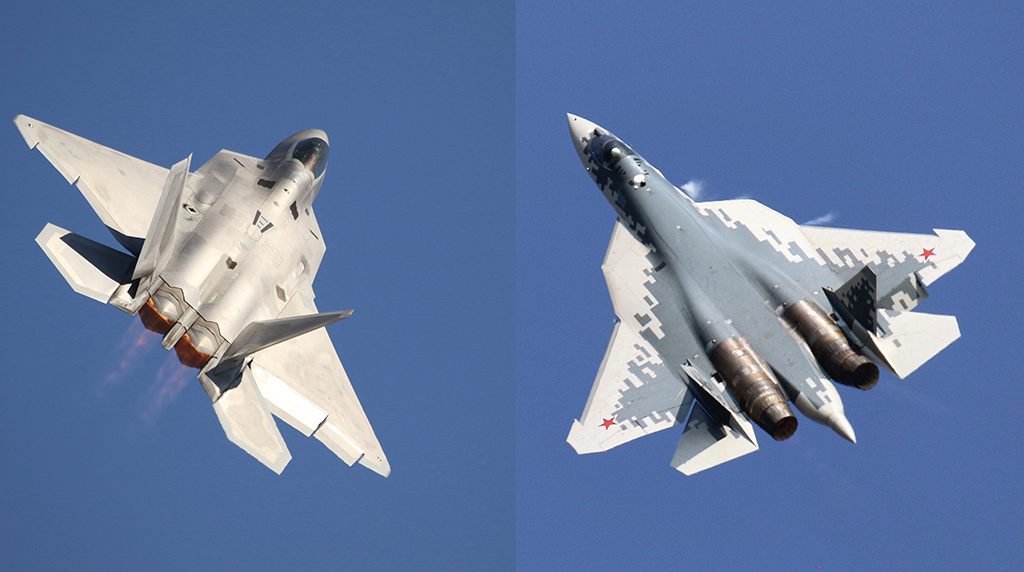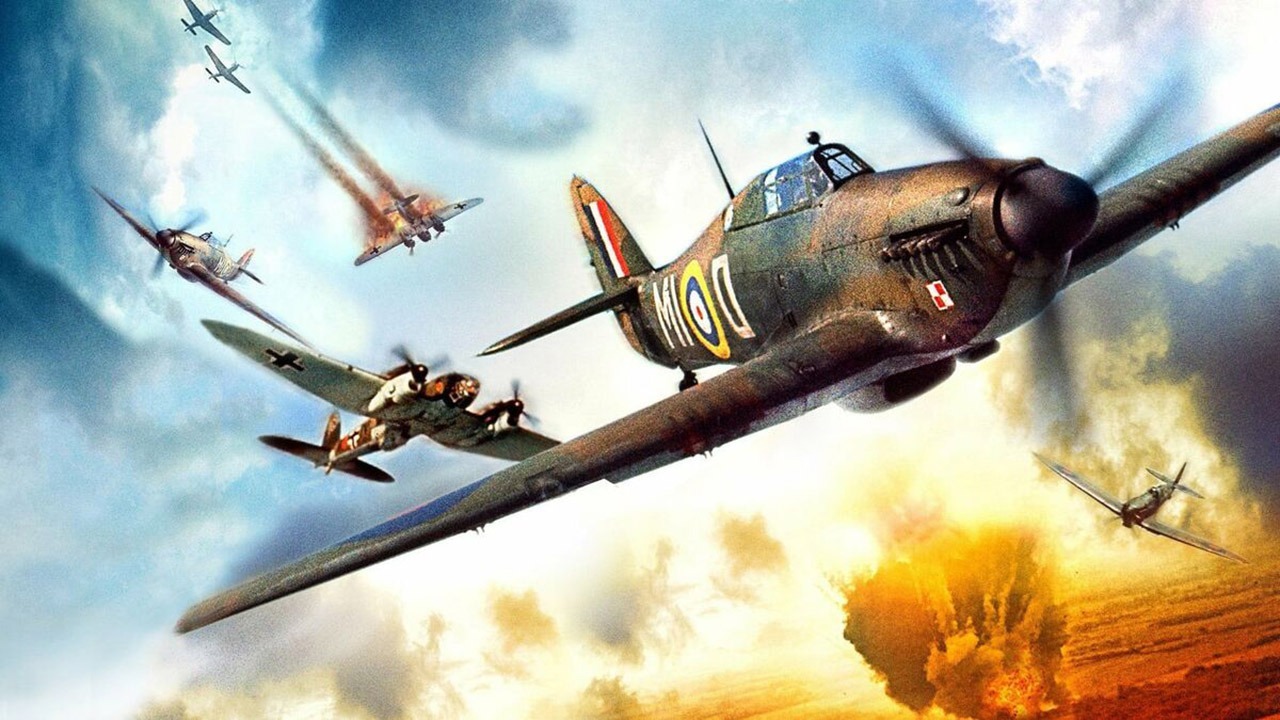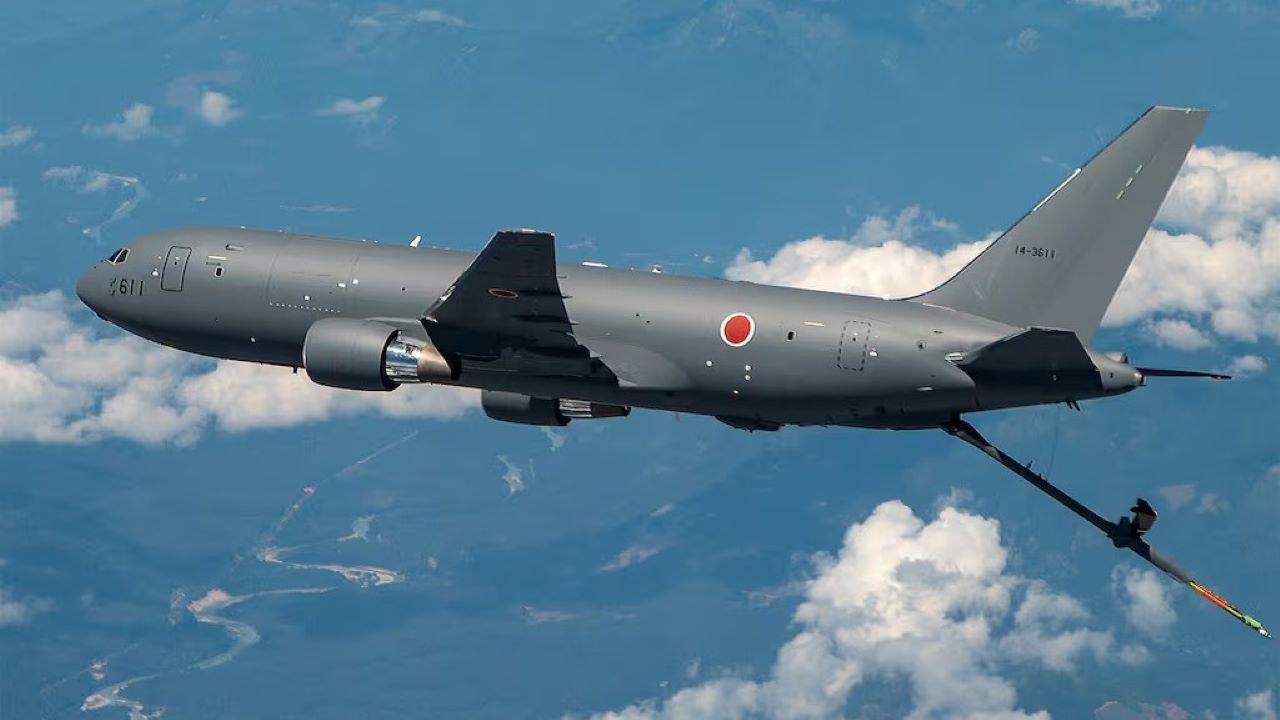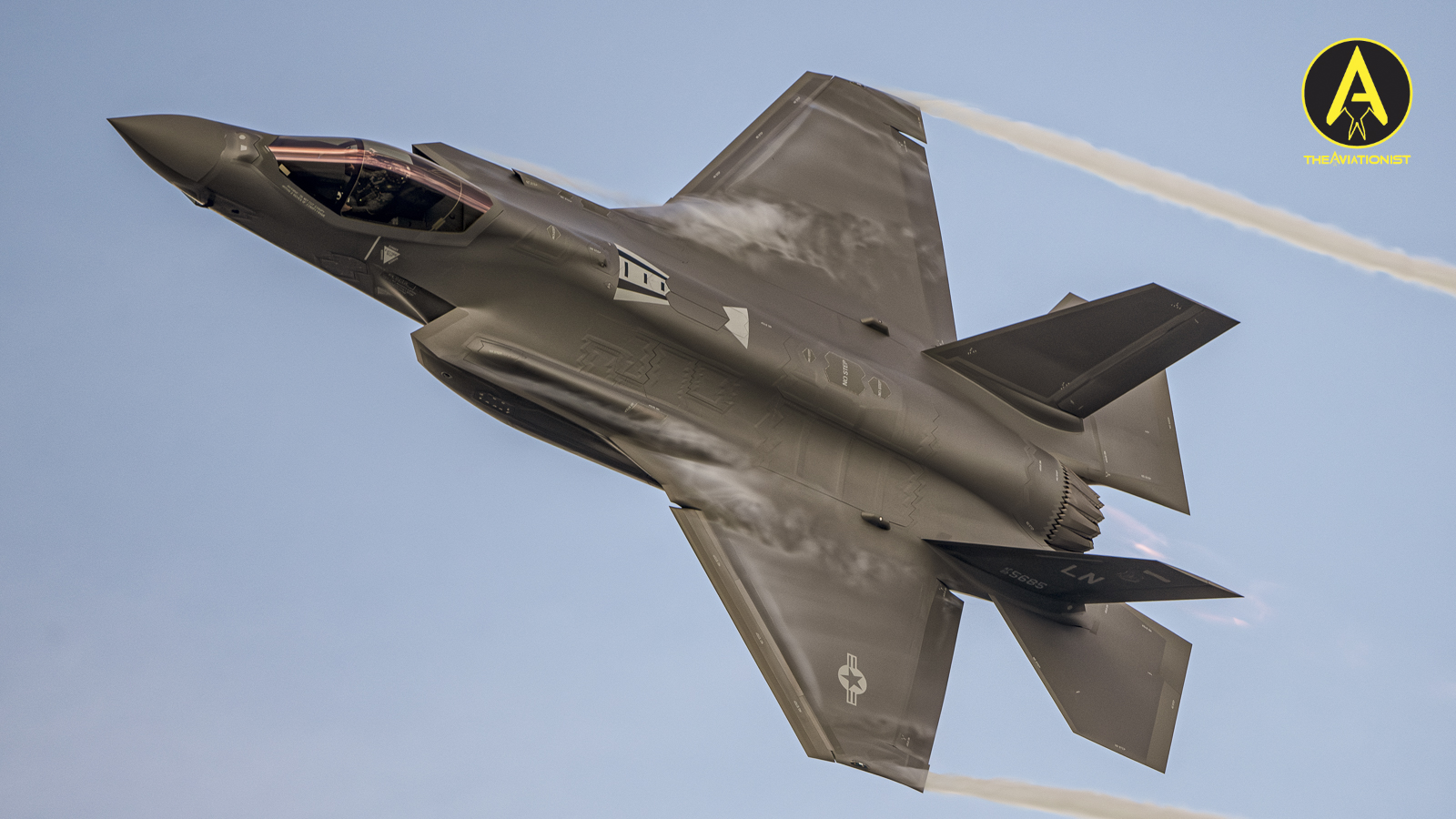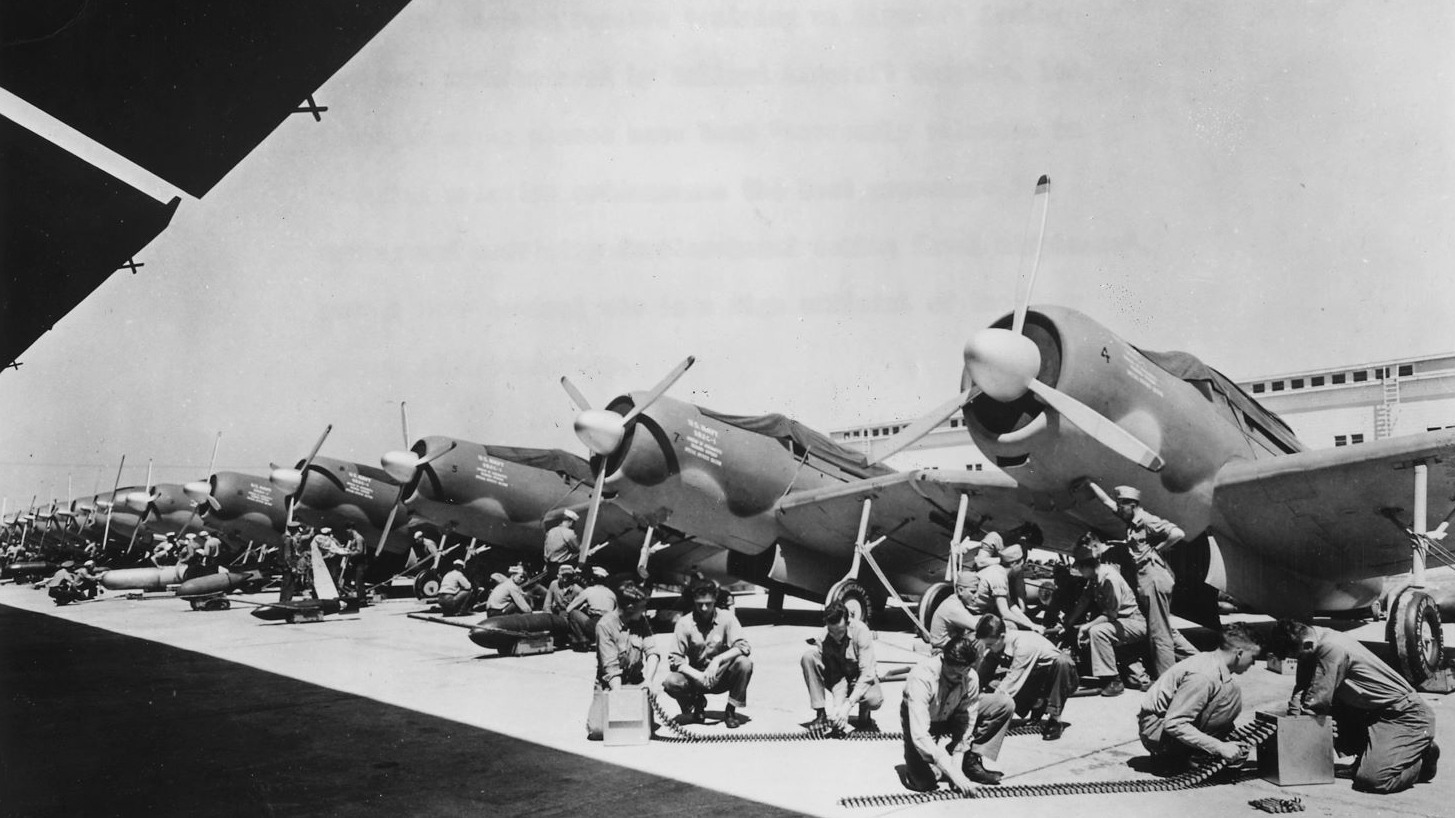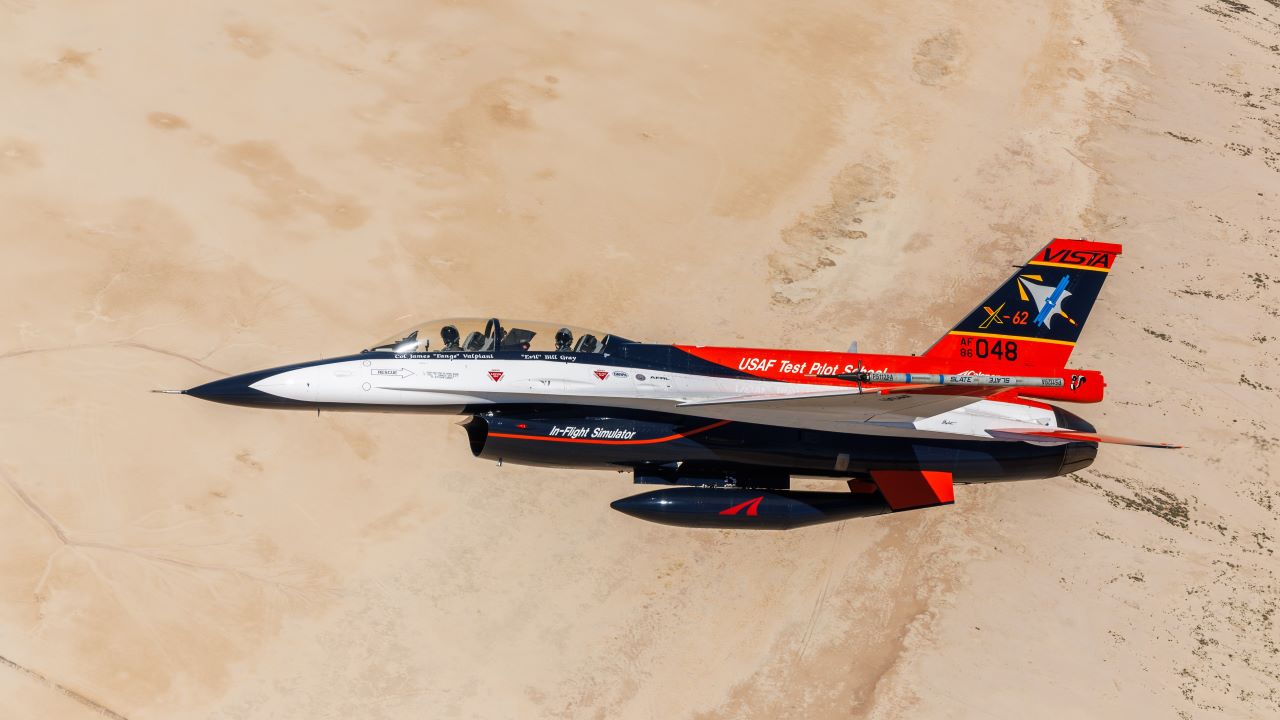Real World Capability Aside, Which Country Puts on The Best Gen. 5 Demonstration?
Military aviation fans and spotters can’t have a conversation about Russian and American aircraft without making comparisons. Whether it is the dogma of “East vs. West”, discussions about which aircraft are more aesthetically pleasing or unwinnable debates about real-world capabilities, these circular arguments are never-ending.
One argument has been settled this week at Zhukovsky International Airport outside Moscow in preparation for the upcoming MAKS 2019 Airshow: who puts on the better airshow demo- the U.S. F-22 Demo Team or the Russian Air Force Su-57?
Strictly in terms of visual spectacle the Russians win the “demo dogfight” hands down. It actually isn’t even a fair fight.
Every U.S. airshow fan who has seen the USAF F-22 Demo Team’s performance is impressed with the aircraft’s unique flight capabilities and its thrilling aerobatic routine. The F-22 Demo Team was the first 5th generation tactical fighter airshow demonstration in the world. As such, every other country who fields any flight demonstration with any combat aircraft has had years to study their routine. The Americans changed airshow demonstrations when they introduced the ground-breaking F-22 Demo Team a decade ago back in 2007. But they weren’t the first to do advanced aerobatics in a twin-engine tactical fighter.
If you delve into airshow performance history more deeply it is Russia’s MiG-29 that is most responsible for changing military aerobatic flight demonstrations forever back at the 1988 Farnborough Airshow in UK. Celebrated Russian pilot Anatoly Kvochur wowed the audience at Farnborough with never-before-seen jet aerobatics including a vertical “tail slide”, a thrilling competitive aerobatic maneuver where an aircraft climbs vertically at decreasing speed until it stalls and begins to fall rearward after losing lift, seemingly out of control, until airflow over the control surfaces is restored and the pilot recovers in dramatic fashion.
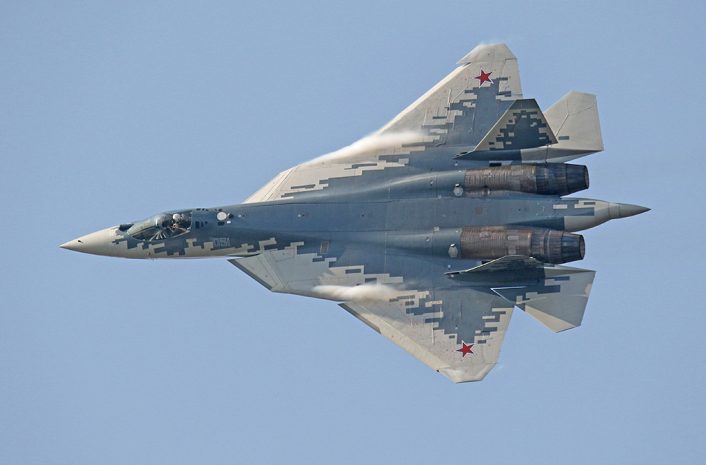
Before 1988, it was one thing to do a tail slide in a 1,540-pound propeller-powered, purpose built aerobatic competition plane, it was quite another to try it in a +24,000-pound, twin-engine tactical jet fighter. By the way, it’s worth remembering that other jets are able to perform the tail slide: the maneuver is also part of the Frecce Tricolori display routine for decades: the soloist of the Italian Air Force aerobatic display team performs the tail slide with the MB.339A/PAN.
The Russians wowed the world at Farnborough at the end of the ’80s in their sensational new MiG-29 when they did a tail slide along with many other never-before seen jet demonstration maneuvers. Unfortunately for the Russians, at Paris Air Show in 1989, an errant bird was also so thrilled by Anatoly Kvochur’s MiG-29 demo that it flew into his right engine intake during the demo, FODing out his engine at likely the worst time of his aerobatic routine, a low-speed, high-alpha pass. The bird was sucked into the engine, which immediately flamed-out. Kvochur was credited with jamming the right rudder pedal to the floor to point the plummeting MiG-29 away from the airshow crowd line before he wowed the world again with another, unplanned, demonstration; Russia’s impressive Zvezda K-36 ejection seat. Kvochur ejected at extremely low altitude. His parachute barely opened before he hit the ground in front of a stunned airshow audience as his MiG-29 collapsed into a flaming heap of wreckage before the world aviation community. While the accident initially seemed embarrassing for the Russians, a nonplussed Kvochur, seen walking around the field coolly after his miraculous ejection, actually showed the west that the MiG-29 was a stunningly agile and remarkably survivable combat aircraft, even when things went very wrong in a demo routine.
Flash forward exactly three decades and I am standing in a Dacha village (cottage community) next to Zhukovsky International this week, one week before the MAKS 2019 Air Show outside Moscow. Photographer Lance Riegle of TheAviationist.com and I are watching the rehearsal of a trio of Russian Su-57s in a new demonstration routine that combines aerobatics with a tactical air combat display that, frankly, blows away anything seen at a U.S. airshow.
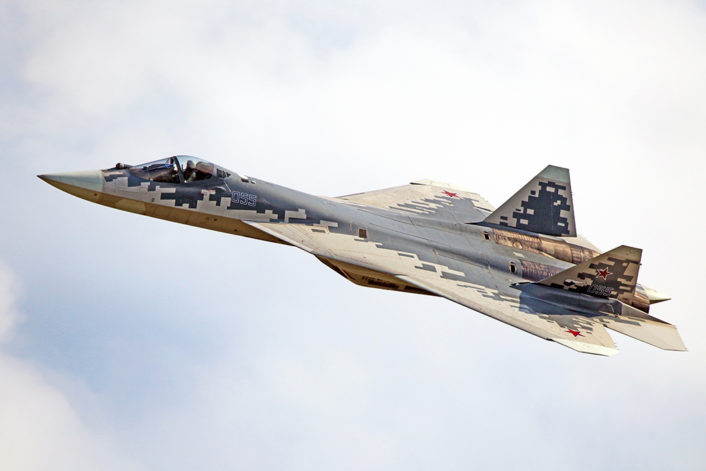
The three massive Su-57s, two in pixelated white and blue camouflage and a third, earlier aircraft in a fading splinter camouflage, enter a vertical climb before a dramatic bomb-burst break and the call over the radio in Russian: “Бой идет! or”, “fight is on!”
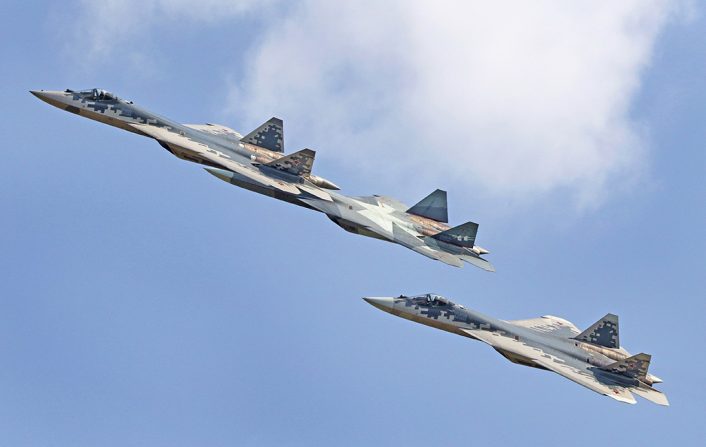
Instantly the two defending aircraft establish a tactical separation, one separating high and the other swooping low in an attempt to get behind the third, attacking, camouflage Su-57.
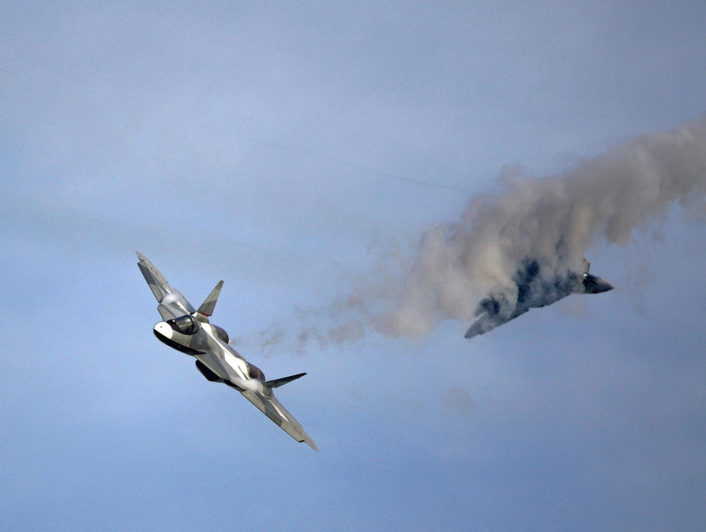
There is a thrilling swirl of big, 5th generation Sukhois as they jink and climb over the demonstration box trying to gain a tactical advantage, rolling and flying almost impossibly tight turns at low speeds that, while of dubious tactical significance, make for visually stunning aerobatics.
Suddenly the lone attacking Su-57 gains the altitude advantage, but rather than “trading altitude for airspeed” in an attempt to regain energy in the dogfight, the lone attacking Su-57 does something contrary to nearly every doctrine of aerial combat: He stops in midair. The aircraft enters a vertical stall, pitches over into a pirouetting plummet and somehow perilously pivots to bring its (GSh-30-1) 30mm cannon to bear.
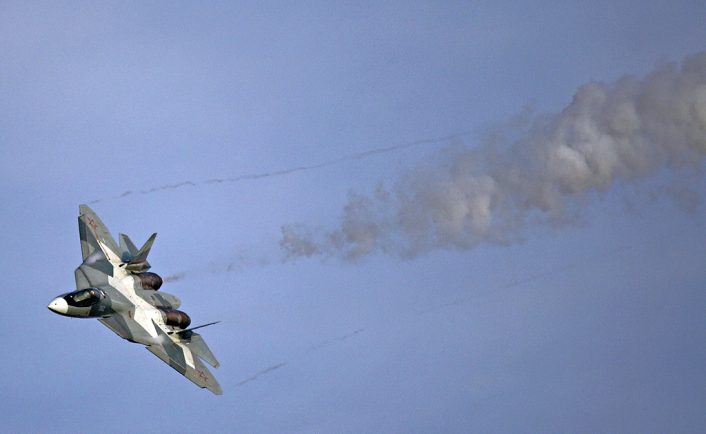
One of the two opposing Su-57s vents a puff to fuel to simulate smoke from being hit by the lone attacker’s 30mm cannon, and the fight is “won” by the Su-57s unique flight characteristics using a maneuver that many western pilots argue “has no tactical value” in a real-world engagement.
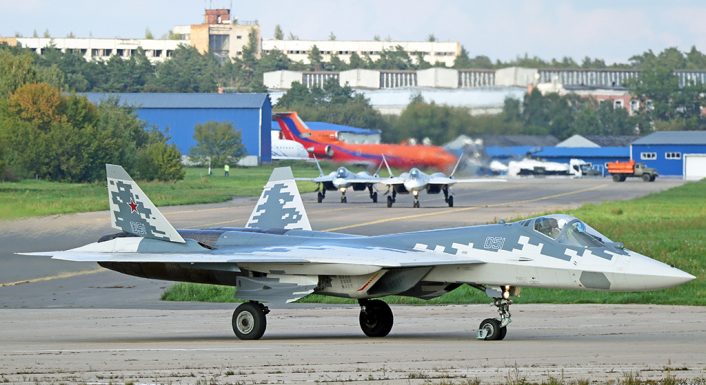
The remarkable Sukhoi Su-57 air combat demo and maximum performance display at MAKS 2019 is a combination of a tactical “capabilities” demonstration that is really a thrilling group aerobatics display combined with a more traditional solo aerobatic display. While the air forces of various countries will rightfully discount any real-world tactical merit to this aerobatic demonstration “theater”, this demo definitely wins the airshow performance “demo dogfight” by a wide margin at MAKS 2019 in Zhukovsky.

